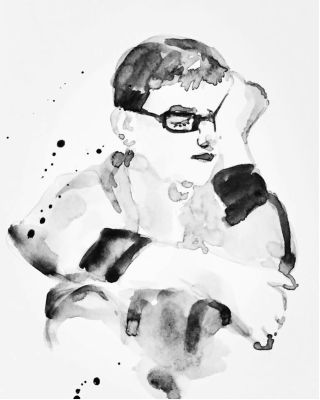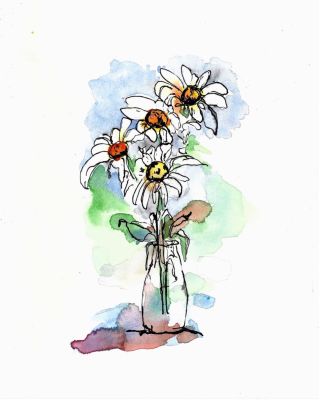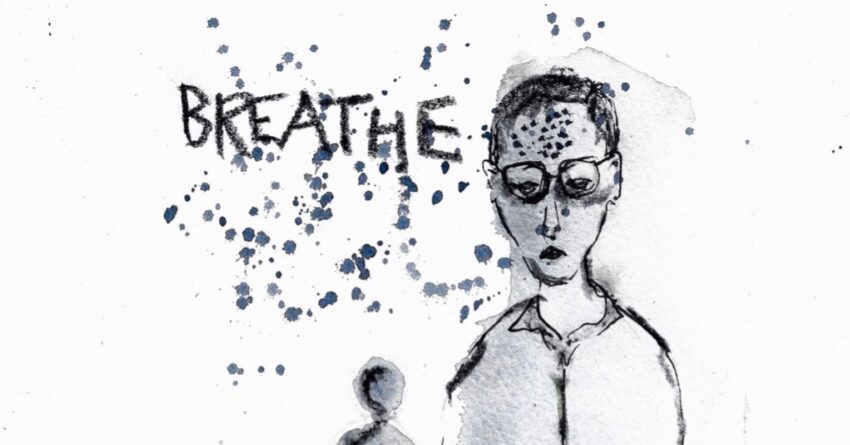
Source: Courtesy of William Doan
The most exciting, impactful, and innovative science happens when experts across different fields collaborate. This post describes one collaboration that is changing how we think about mindfulness-based stress reduction. If you’re like me, you may have difficulty with traditional mindfulness practice because you cannot stop your mind from wandering to those intrusive thoughts: What should we have for dinner? Or I feel terrible that I yelled at my child this morning.
We know mindfulness practices work (Keng et al., 2011), but how can we make them easier to use? One answer starts with an email I received over the pandemic from a Penn State theatre professor, William Doan. His words here are what started this collaboration.
Doan: I love to draw, and the fact is, I need to draw. Drawing is one of my essential tools for maintaining my mental health and well-being. Many who live with anxiety and depression find that words are inadequate for expressing what the daily experience is like. I have found that drawing makes it easier for me to share that experience with others, capturing it with line, color, texture, and shape. Earlier in life, I didn’t know why I loved to draw. I didn’t really think about it. Eventually, I discovered that I needed to draw. It took decades to make the connection that drawing calms me down, makes me feel less afraid, helps me control my breathing, slows and down my racing thoughts. Drawing grounds me in the here and now.
I draw to be able to feel without becoming overwhelmed, to think without becoming trapped in a negative chatter loop. I draw to process information in a way that makes meaning for me. The quality of the drawing isn’t important. It’s the embodied process of drawing that orchestrates a harmonious connection between my body, mind, and spirit.
I use drawing as a tool for finding freedom from the ways living with anxiety and depression tends to dehumanize me.
For me, drawing begins with breathing. Mindful breathing and drawing are about sustained awareness and presence.
Connecting my breath to drawing is at the core of my creative practice. This practice led me to wonder if my approach could provide evidence for the value of drawing to maintain the mental well-being of others. I was fortunate enough to find colleagues in the Emotion Development Lab at Penn State who were also curious about the efficacy of such a practice.

Source: Courtesy of William Doan
Doan’s question of whether the effectiveness of adding breath to drawing could be tested as an intervention was the motivation behind our Drawing and Anxiety Study. Sarah Myruski is leading the charge and provides some of our initial findings in her own words.
Myruski: Informed by research from arts-based (e.g., de Witte et al., 2021) and mindfulness-based interventions (Keng et al., 2011), our interdisciplinary project brings together artists and psychological scientists to provide evidence for a novel guided-drawing intervention as an accessible anxiety-reduction tool. We integrate drawing with mindfulness elements, including focused breathing, embodiment, and emphasizing process over product. In other words, the drawing experience, including setting aside time in daily life to breathe and create, is paramount, while the actual tangible output does not matter as much. This means that anyone, at any level of artistic skill or experience, can potentially benefit from the drawing practice we are developing.
Using a pilot sample of 18-to-25-year-olds, we have recently found that both subjective anxiety and physiological markers of arousal were significantly decreased compared to before the guided drawing activity. We also found that those who reported having difficulties managing their emotional experiences showed the greatest reductions in anxiety. These results provide initial evidence that this guided drawing intervention may help ease anxiety and that those who are more vulnerable may reap the most benefits.
We have only begun to examine the power of drawing with this paradigm. We have ongoing studies with adults and adolescents and are planning to add additional physiological markers and examine how long the positive effects of the guided drawing last.
William Doan is a professor of Theatre and Director of the Arts and Design Research Incubator at Penn State. He is a solo performer who creates performances and animations with his drawings. Sarah Myruski is an assistant research professor in the Psychology Department at Penn State and associate lab director of the Emotion Development Lab.
